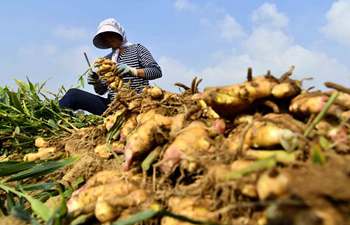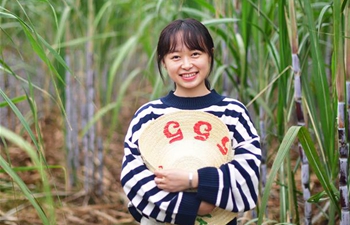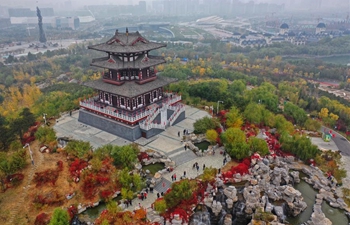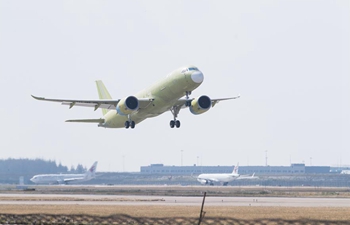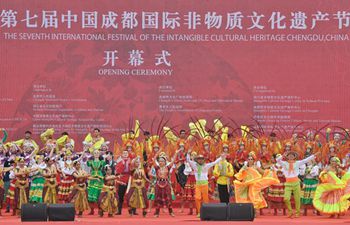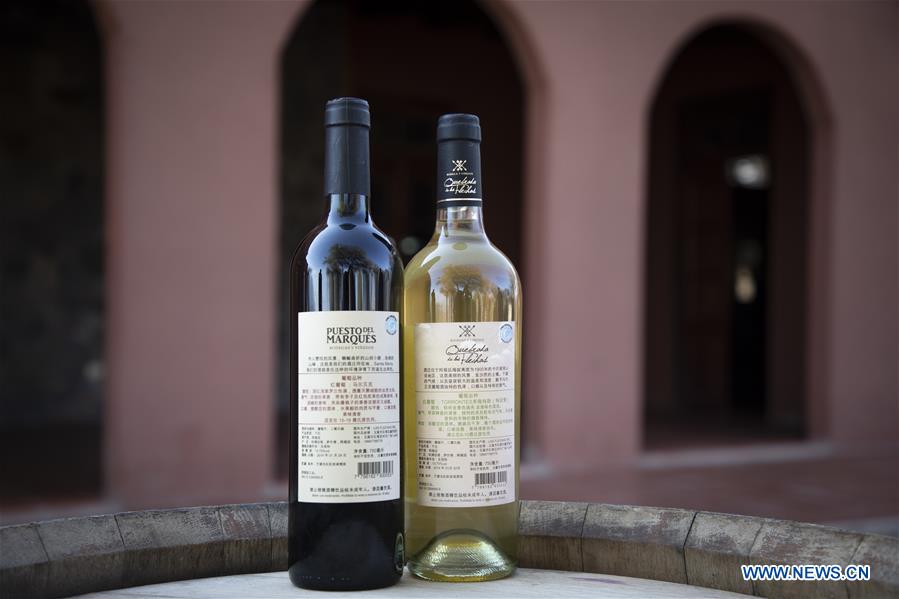
Photo taken on Sept. 25, 2019 shows wines to be imported to China at a winery in Catamarca of Argentina. Five leading Argentine wineries are looking to expand their consumer market in China by participating in the second China International Import Expo (CIIE), to be held in the eastern Chinese city of Shanghai on Nov. 5-10. (Xinhua/Martin Zabala)
BUENOS AIRES, Oct. 24 (Xinhua) -- Five leading Argentine wineries are looking to expand their consumer market in China by participating in the second China International Import Expo (CIIE), to be held in the eastern Chinese city of Shanghai on Nov. 5-10.
The wineries -- Puesto del Marques, Quebrada de las Flechas, Puna, Las Mojarras and Hualfin -- are all located in northwest Argentina's Calchaqui Valley, where the high altitude and rugged terrain are ideal for producing aromatic, full-bodied Malbec and Torrontes varietals.
"We have found a very large wine market in China," said Jose Poncio, manager of the Calchaqui Valley Wine Export Association of the five wineries, in a recent interview with Xinhua.
As Chinese consumers become increasingly familiar with Argentine wines, they are showing a strong preference for Malbec, said Poncio, adding that Calchaqui's high elevation, on average more than 1,900 meters above sea level, is particularly suited to this variety of grape.
Moreover, "the Calchaqui Valley is enclosed between two mountain ranges, and that gives the wine certain qualities, as the grapes grow without much humidity, essentially absorbing mineral water and melted ice that comes from the mountains," the wine expert added.
Poncio plans to attend the upcoming second CIIE and strengthen ties with potential customers during his sixth visit to China.
"The selection we have made for this second edition of CIIE is mainly made up of Malbec red wines and some blended wines that contain a lot of Malbec," said Poncio, adding that Torrontes, a white wine specific to the Calchaqui Valley region, will also be marketed at the event.
The association has an annual production of 8 million bottles and aims to export 8 percent of that output to China.
With that in mind, representatives of the five wineries have already met with potential buyers and distributors in many Chinese cities, including Guangzhou, Shenzhen, Yiwu, Tianjin, Beijing and Shanghai.
Initially, the wineries expect to sell wines via Chinese restaurants and hotels, said Poncio, while the group is also looking for strategic partners for online business.
"This year's CIIE is a clear example of a strategic Chinese government decision to open up to the world, so everyone can offer their best products, services and solutions to the Chinese people. And that will result in an improvement in the standard of living of the Chinese population," Poncio said.





